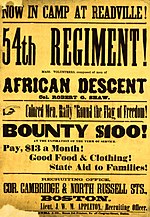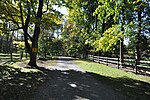Readville Race Track

The Readville Race Track located in Readville, Massachusetts had a famous and exciting history for Harness Racing, Motorcycle Racing, Auto Racing and early military combat Aviation. When the track officially opened on August 25, 1896, it quickly became one of the premier venues for harness racing in the United States. It was known as one of the country's fastest courses and many records were broken there. In 1903 history was made at Readville when a five-year-old mare named Lou Dillon became the first trotter to run a two-minute mile. On August 25, 1908 the most spectacular event in all harness horse history was staged, the $50,000 American Trotting Derby won by Allan Winter.
Excerpt from the Wikipedia article Readville Race Track (License: CC BY-SA 3.0, Authors, Images).Readville Race Track
Meadow Road, Boston Hyde Park
Geographical coordinates (GPS) Address Nearby Places Show on map
Geographical coordinates (GPS)
| Latitude | Longitude |
|---|---|
| N 42.229686111111 ° | E -71.133875 ° |
Address
Meadow Road 100
02136 Boston, Hyde Park
Massachusetts, United States
Open on Google Maps









